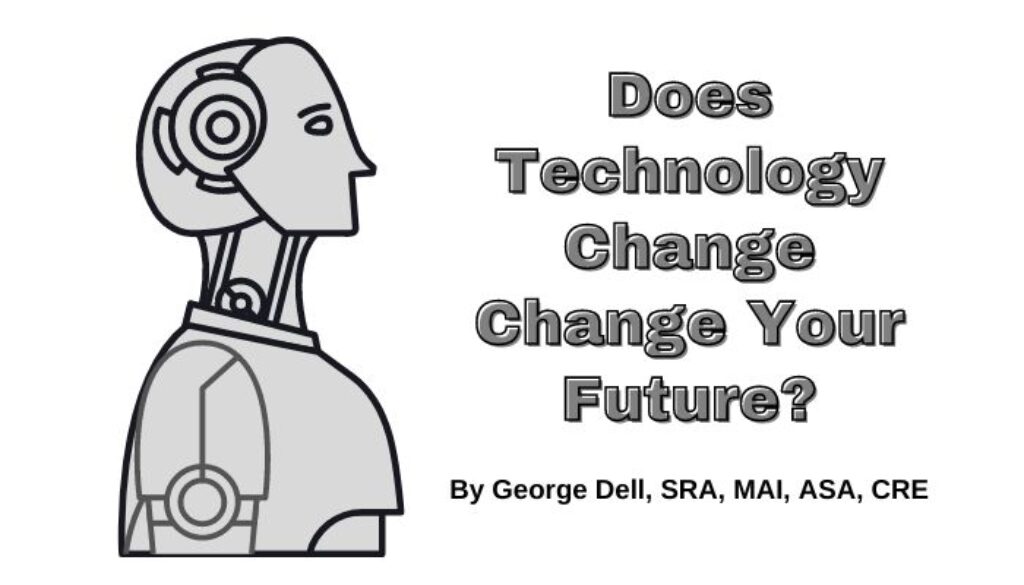Is it just change, a little change or a big change? What is the likely answer?
There are two change possibilities: 1) You will be mostly replaced by a machine; 2) You will be running the machine in combination with your subject-matter knowledge.
As humans, and as appraisers, we still have some natural advantages. But in order to run the “machine” we have to understand it. The ‘machine’ has two parts: the data, and the algorithms. Let’s look at these two parts.
The first part is the immediate, complete, and improving data available. Gone are the days when three or four “best” comps were about all that could be done. Big data means most all the sales are available, right now. When we discard information, we lose both accuracy and precision (“trueness” and “sureness”). For us to compete, we need to start to use all available data — just like USPAP tells us. We can get all the data just as well as the machine. So the data part of the future is not the big issue. Is the problem in understanding a bunch of data?
The second part is computer power. Data scientists call this “computation.” The machine has the computation power. Hmmm. But don’t I have a lot of computer power right in front of me? Well, what we hear is that the computer has algorithms. It calculates fast and almost perfectly. So how do we get algorithms?
Actually we buy algorithms all the time.
For us appraisers it’s appraisal software. We buy it. We buy the data. What can we sell?
My opinion is that we must learn to leverage our market knowledge. To see how useful knowledge follows a path from the data we have. This path, this process – is an algorithm. The traditional appraisal process is a model, a generalized algorithm. It works well in many situations. The sound we hear — is our competitors washing on the shores of our market knowledge. They have algorithms. They have computation.
I believe the answer to our survival is gaining the ability to use algorithms. Not the math, not the programming, not the algorithm itself. We need only understand how the computative algorithm helps our brain understand and present the knowledge. We need to understand the input, and the output. We need to be able to present the understanding to our clients. This is the essence of Evidence Based Valuation.(C)
The key elements of EBV(C) are as follows:
- The data set is the whole market, not just four or five ‘best’ comps;
- Calculations and estimates replace personal judgment wherever possible;
- The data selection process is separated from the analysis process;
- Visual interface leverages the brain’s superior abilities to see patterns;
- Additional products and services are enabled for sale.
In coming blogs, we’ll look at each of these elements in more depth.

June 7, 2017 @ 8:55 am
The cognitive abilities of the human brain give it the ability to see the patterns and then write the corresponding analytical algorithms that go into the reconciliation of the market and its behavior to the Subject property’s characteristics. The Subject is the defendant, the market the jury, and the appraiser is the judge, and the reviewer the appellate court. The rules must be followed with the understanding that the market will always remain true to itself, even if and when it is being manipulated. The appraiser should be able to observe those patterns that are atypical of the market and report them to the client in the body of the report of the appraisal.
June 8, 2017 @ 12:27 am
Thank you for the post George. I too believe appraisers will be replaced by machines. Most appraisers will point to Zillow and other AVMs and say look at how bad they are or they will say that they don’t have the data without the appraisers. My answer to that is that AVMs will keep getting better as the data gets better and more categorized. Right now, even Fannie Mae does not categorize the data good enough. I think it will need to be not just a view, but a 60 degree view from the main floor living spaces and a 180 degree view from the upper bedroom areas. It does not take high paid appraisers to go out and gather data like this and the data is likely to come from many sources.